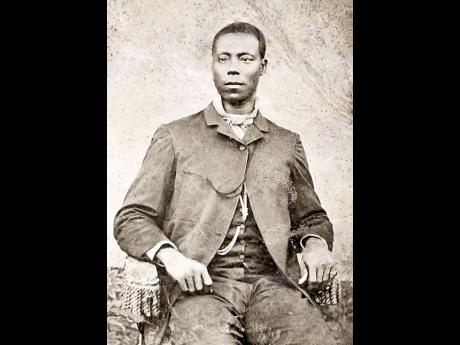Stop asking, it is Paul Bogle
The image of National Hero Paul Bogle that we all know is still being questioned. People are still claiming it to be that of American dry-cleaner Thomas Jenning.
The doubters are saying that the hero looked too decent, that he could not possibly afford the expensive-looking suit that he posed in, and that photography did not come to Jamaica during Bogle's era. But a Gleaner article that was published on April 19, 1959, should put the matter to rest.
The story said a W.G. Ogilvie, a member of the Jamaica Historical Society at the time, had discovered the 'tintype' photograph, and had attributed ownership of it to a Reuben Ewen of Spring Garden, a village located above Stony Gut in St Thomas. Bogle lived in both places.
DISTINCT FACIAL FEATURES
Ewen's mother was a Bogle, and his maternal grandmother was a niece of Paul Bogle. His mother and his grand-uncle, Paul Bogle's nephew, assured him that the image in the photo was, in fact, that of Paul Bogle.
As it relates to his facial features, Ewen said a peculiarity of the Bogle family was their bottlenecks, and Bogle had a bottleneck, "thick at the base and slanted upwards". When he was on the run after the 'Morant Bay War', a reward of £2,000 was offered for his capture. He was described in the Colonial Standard newspaper of October 18, 1865 as:
"A very black man, with a shiny skin, bearing heavy marks of smallpox on his face, and more especially on his nose. Teeth good, large mouth with red, thick lips; about five feet eight inches in height, broad across the shoulders, carries himself indolently and has no whiskers."
National Hero Bogle had dominant personality
Bogle might have had a sluggish deportment, but he was an activist, not a rough-and-tumble hoodlum. He was a small farmer and baker who had properties, owned horses, and was a native Baptist deacon who built his own chapel.
"Paul Bogle was a man of energetic, natural ability and dominant personality, having the imperious character of an African chief combined with the conviction that he was an instrument of the power and justice of God ... of most limited education, but successful and well off among his class of small settlers ... . He had acquired much local influence and authority," Ewen told Ogilvie.
Thus, Bogle could afford suits, and certainly to be photographed. Photography had reached Jamaica in the 1840s, not too long after it was invented. His black suit was typical of the style of dress that a local preacher would have worn in those days. It was bereft of a round white collar because he was not ordained at the time when the photograph was taken.
Sometime ago, when The Gleaner spoke with University of the West Indies lecturer, social historian, and Paul Bogle scholar, Dr Clinton Hutton, he said there were strong reasons to believe the picture of Bogle was taken at Duperley's, the same studio in which George William Gordon, Bogle's associate, took his. The photo, the article said, was put into the custody of the Institute of Jamaica.

